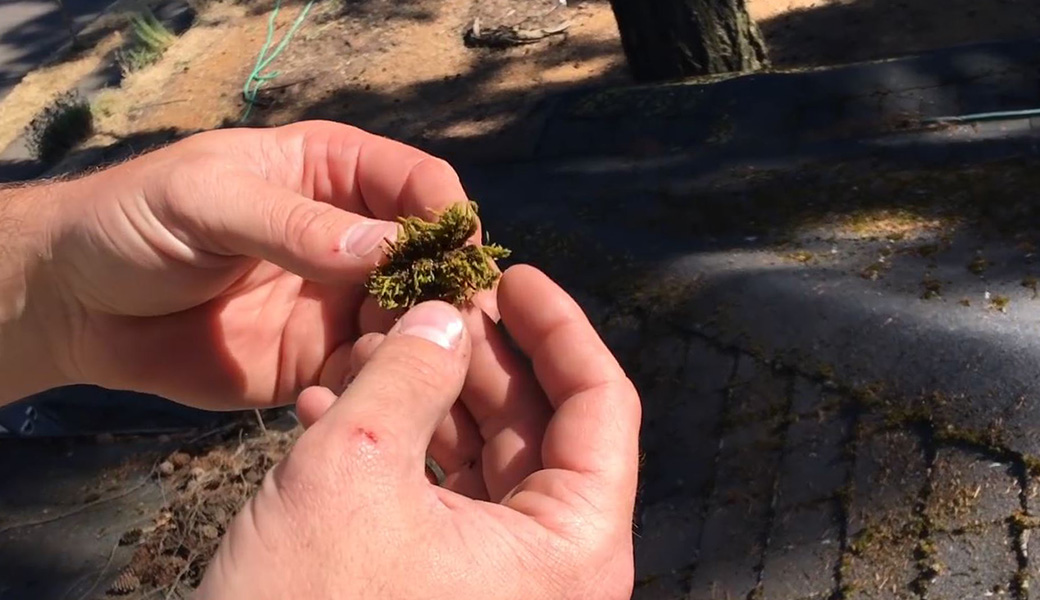Moss on the Roof Removal - How Important Is It?
Some people don't mind the way that moss looks as it grows on their roof, offering a green, natural looking environment on which insects and other animals can enjoy. Unfortunately, despite having quite a nice aesthetic appeal, allowing moss to grow on your roof or other areas of your home (or business property) is only going to cost you a great deal more a few months or years down the line.

WHY IS MOSS SO DANGEROUS?
‘Dangerous’ seems like quite an exaggerated word to use for something as seemingly insignificant as moss, but the reality of the situation is this: moss CAN prove dangerous. It’s quite a heavy organism, and any long-term, extra weight on your roof is going to be detrimental to it. Over time, parts of the structure could buckle or bend with the weight of the moisture-soaked moss, causing broken or moving shingles, a leaking roof, and even severe damage to the joists or physical structure. Ignore these problems further still and you could face the collapse of the entire roof.
MOSS REMOVAL INCREASES PROPERTY APPEAL
If you are trying to sell or rent your home, prospective buyers are likely to be turned off by the idea of having to get rid of the moss that has been growing on your roof, which means a good idea would be to make sure it is removed before putting the property on the market. No one is going to pay full price for a house that faces expensive roof repair and maintenance work — which is exactly what moss could cause.
The removal of moss from the roof is also going to make the property look nicer in general. Regardless of your own personal feelings about the stuff, it is considered to be unsightly and a sign of disrepair and probably not the ‘rustic’ look you had intended.
HOW TO REMOVE MOSS ON THE ROOF
To start with, you’ll need to know exactly what you're up against, and this means heading up onto the roof to take a closer look yourself. Once you know how much moss you have and how far it extends across the structure, you’ll know what materials and products, as well as how much of them, to complete the job effectively. Guessing at this one will just mean a very increased chance of having to do it twice. Or — worse than that — still needing to deal with costly roof repair jobs many months later.
Removal of the moss itself can be done by hand — using your actual gloved hands, or using a long-handled brush or similar. You will need to perform the work lightly, as any extra pressure or force on already-weak shingles can cause further damage. The same can happen if you use a jet or power washer to remove the moss — the high-pressured water jets can disrupt, move, or break weak shingles.
When you are working on your roof, regardless of which approach you have chosen, make sure that you always work from the top to the bottom of the structure. Moving from the bottom to the top is a surefire way to add more damage and breakage.
A thorough roof cleaning is a good idea to get rid of any other biological organisms that could be present, including moss, fungi, algae, etc., and you could also considering cleaning with diluted bleach if you don’t have moss-specific products to hand. These are fairly cheaply purchased, however, and they are fully designed for the job. You will need to consider repercussions of using those products, to the local ecosystem — run-off bleach can contaminate water sources and soil, and can also kill wild animals and pets.
HOW TO PREVENT MOSS ON THE ROOF
Unfortunately, even with your best efforts, it is still likely that moss will come back from time to time. It’s just one of those things. There are things that you can do to make life harder for the organism, though. The first thing that we recommend is removing all tree branches and similar, because these are things that moss like to grow beneath. They enjoy an environment that is well-shaded from the harsh rays of the sun, and also stays cool and damp. The shadows and cool temperatures caused by trees and tree branches cause small “hotspots” on the roof. Or, rather, “coolspots”. The more sunlight you can add to the roof, the less chance you will have of growing moss.
Are there a lot of trees in your area? Leaves and petals, alongside twigs and branches, cause problems because they add shade under which the moss can grow. Not only that, they provide the moss with additional food sources, and retain moisture. In turn, more moss grows. Investing in a leaf blower is smart choice; you can blow all debris away before you experience real problems with it. Alternatively, you could head on up there yourself to remove the debris by hand, or hire in a roofing company in the area to complete the job for you.
As well as keeping your roof free from debris, make sure that your gutters are regularly cleaned out too. This can, once again, bring additional moisture to the roofing area, causing more moss to form. You could also look at incorporating copper or zinc strips to the roof to prevent algae and moss growth, but this isn’t always recommended when the roof is already installed, and is instead best performed during roof repair or renovation. The work required to install the bricks can mean damaging or weakening the existing structure and features.
Visit our Roof Contractor home page to learn more about us, or hire a local professional from over 100 USA locations.

